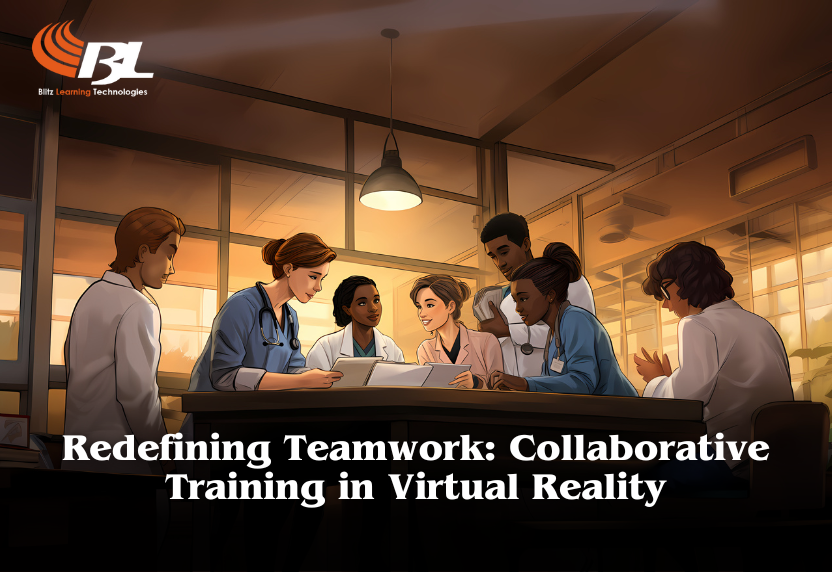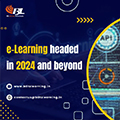
Blog
- Home
- Blog

17Mar
Redefining Teamwork: Collaborative Training in Virtual Reality
Introduction
In the age of digital transformation, Virtual Reality (VR) has emerged as a groundbreaking tool for reshaping how teams collaborate and learn. Beyond gaming and entertainment, VR is now at the forefront of corporate training, redefining teamwork by creating immersive and interactive experiences that bridge gaps between geographical, cultural, and professional boundaries.
The Evolution of Team Collaboration
Traditional training often struggles to replicate real-world scenarios, especially for teams spread across the globe. Virtual Reality, however, eliminates these challenges by simulating environments where participants can interact in real time, regardless of location. This evolution empowers teams to:
1. Break Down Silos:
VR fosters collaboration by creating shared virtual spaces where employees can brainstorm, problem-solve, and innovate together.
2. Enhance Engagement:
Immersive VR experiences capture attention and make training sessions memorable, leading to better retention of knowledge.
3. Build Soft Skills:
From conflict resolution to leadership development, VR provides safe spaces for employees to practice and refine interpersonal skills.
Real-World Applications
1. Crisis Management Training:
VR allows teams to simulate high-pressure scenarios, such as emergency responses or operational failures. Participants can practice decision-making and communication strategies in a controlled yet realistic environment.
2. Diversity and Inclusion Workshops:
By stepping into someone else’s shoes—literally—participants can experience different perspectives, fostering empathy and understanding.
3. Onboarding and Skill Development
New hires can navigate virtual replicas of offices or practice job-specific tasks, speeding up acclimatization and skill acquisition.
The Science Behind Collaborative VR Training
Studies show that VR-based learning can increase retention rates by up to 75%, compared to 10% for traditional methods. This is because VR engages multiple senses, making experiences more impactful. In collaborative VR settings, the shared experience of solving problems or achieving goals strengthens team bonds and reinforces the training material.
The Future of Teamwork in VR
As technology evolves, the possibilities for VR-based collaboration continue to expand. AI-driven avatars can mimic real-world personalities, adding depth to training scenarios. Integration with advanced analytics provides insights into team dynamics, helping organizations identify areas for improvement.
Moreover, VR is paving the way for hybrid work environments where remote and in-office employees can seamlessly collaborate. Imagine a global team gathering around a virtual whiteboard, sketching ideas, and building prototypes—all from their respective locations.
Challenges and Opportunities
While the potential is immense, challenges such as high initial costs, the need for robust infrastructure, and user adaptation remain. However, as VR technology becomes more accessible and user-friendly, these barriers are gradually diminishing. Forward-thinking organizations are already investing in scalable VR solutions, recognizing the competitive edge they offer.
Conclusion
Collaborative training in Virtual Reality is not just a technological innovation; it is a paradigm shift in how we perceive teamwork and learning. By breaking barriers, enhancing engagement, and fostering empathy, VR is setting new standards for collaboration. As organizations embrace this revolutionary tool, they are not only preparing their teams for the challenges of today but also building a resilient and agile workforce ready for the future.
In this redefined era of teamwork, the question is not whether VR will transform collaboration but how soon your organization will join the revolution.

Neha Khare
About authorNeha Khare specializes in designing engaging and effective learning experiences tailored to learners' needs and also creates insightful blogs on corporate e-learning. She develops creative instructional methods, integrates multimedia, and aligns content with learning goals. Neha's innovative techniques and blog contributions significantly enhance the quality and impact of corporate training programs.



Leave a comments